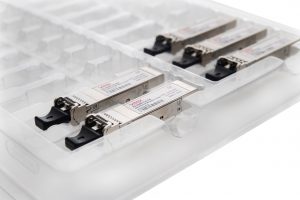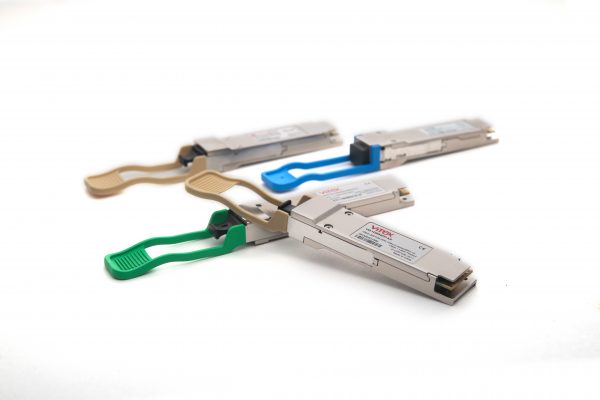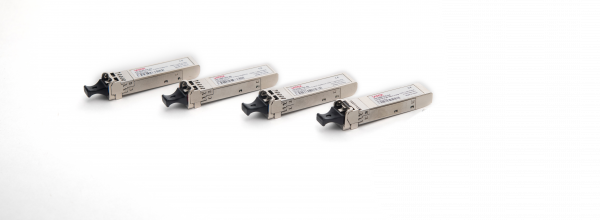To buy or not to buy that transceiver should not be an existential dilemma. It’s not at all like buying a used car, where you’re pressured into quick decisions and bound to sticky contracts.
The process should not be risky. There are safeguards in place to ensure that you’re getting a high quality, well-constructed and reliable product.
First educate yourself about transceivers. Ask the right questions. These five questions are what our customers often ask – or should be asking.
- How do I know I’m getting a good quality transceiver?
Buy from a reputable vendor that offers you a free trial or sample so you can test it yourself. Is there someone to talk to who will walk you through the trial process and answer questions? Know your own engineering requirements and what form factor you need. Ask questions about the quality of materials (laser, chips) engineering specifications and whether the vendor tests products before shipping them to the customer. What tests are they doing on the product? What are their quality control processes? Does the product have a warranty? Companies that offer quality products are not afraid of longer warranty periods (i.e. two years); they stand behind the quality of the product. Pay attention to details.

- Why is there a large price disparity in the same product offered by different companies?
Lots of factors affect pricing. A product offered by one vendor may cost more if:
- The vendor adds value by customizing the product for your needs or private labeling;
- The vendor adds value thorough rigorous quality control and testing, including temperature, reliability, durability and qualification tests and/or design verification tests;
- The transceiver has special certifications, which require additional testing and compliance;
- The vendor adds value by providing technical or customer support;
- Factors beyond their control intervene such as supply chain issues or tariffs imposed by the government.
A vendor may offer a product at a lower price if:
- They are discounting products for regular customers that place large orders;
- They have a lower overhead such as an e-commerce dealer and don’t offer any added value in the way of technical or customer support or extended warranties on their products;
- The vendor is offering a new product and their business strategy is to discount the product to get customers to try it.

- What are the warning signs or red flags that you are buying an inferior product or dealing with a less than reputable vendor?
- The product packaging is shoddy;
- The vendor does not offer a trial period, offers a very short warranty or none at all;
- The vendor does not have staff trained specifically in fiber optics engineering;
- The vendor cannot answer specific questions about the quality of materials, chips, lasers, or about their own quality control process;
- The vendor does not test products themselves;
- The vendor has a poor reputation (check BBB), poor online ratings;
- The vendor has not been in business for long and does not have a professional website;
- The vendor is not easy to reach (or available at all) if you have any questions or problems.
- What do I do if I have a lot of transceivers invested in a project and one needs to be replaced but that particular form factor has been EOL’d? Do I have to replace all of them?
- Some manufacturers or vendors will offer a replacement product when their product has been discontinued;
- Some vendors have a network of suppliers they deal with and can locate a product that is no longer widely available. See this post on how we were able to help a customer source a part quickly when their supplies EOL’d the part at short notice.
- Many models of transceivers at particular form factors are compatible with earlier versions of that model. This is the case with QSFP: their QSFP56 will be backwards compatible with QSFP28, etc. That means if you have to buy a later model transceiver and cannot get the original one you’ve been using on a project, it will work with your other technology and you won’t have to replace ALL, just one.
The worst-case scenario is that you have to upgrade all your transceivers on that project. It’s unlikely. Try these other options first.
- There are so many form factors and speeds. How can I get one that works well, that meets engineering specifications while still staying within my budget? When do I need to trade it in for the latest and greatest?
Transceivers come with detailed engineering specifications that are consistent from one electronics manufacturer to another and codified in industry agreed-on form factors. Read the engineering specifications carefully. For application-specific issues, to some extent judgments and decisions require engineering knowledge and experience with fiber optics products. As for how to get the best buy for your money, it’s best to deal with a reputable vendor who has trained engineers on staff who can talk you through your options. Ultimately, decisions about upgrading your products are based on your technical requirements: the speed of the application you need, the purpose you are using it for, how much bandwidth (or data) you need to transmit. Large companies that require very fast processing of large amounts of data (such as high-performance computing or data centers) frequently need to jump on higher speeds and the latest technology more quickly.

In short, buying that perfect transceiver is realistic if you educate yourself about the product, know your needs, and ask the right questions.
For over 20 years, Vitex, based in northern NJ, has been serving multiple industries including data centers, telecommunications, healthcare and broadcasting. Contact our trained fiber optic engineers to get answers to your optical transceiver questions.
Related Products

